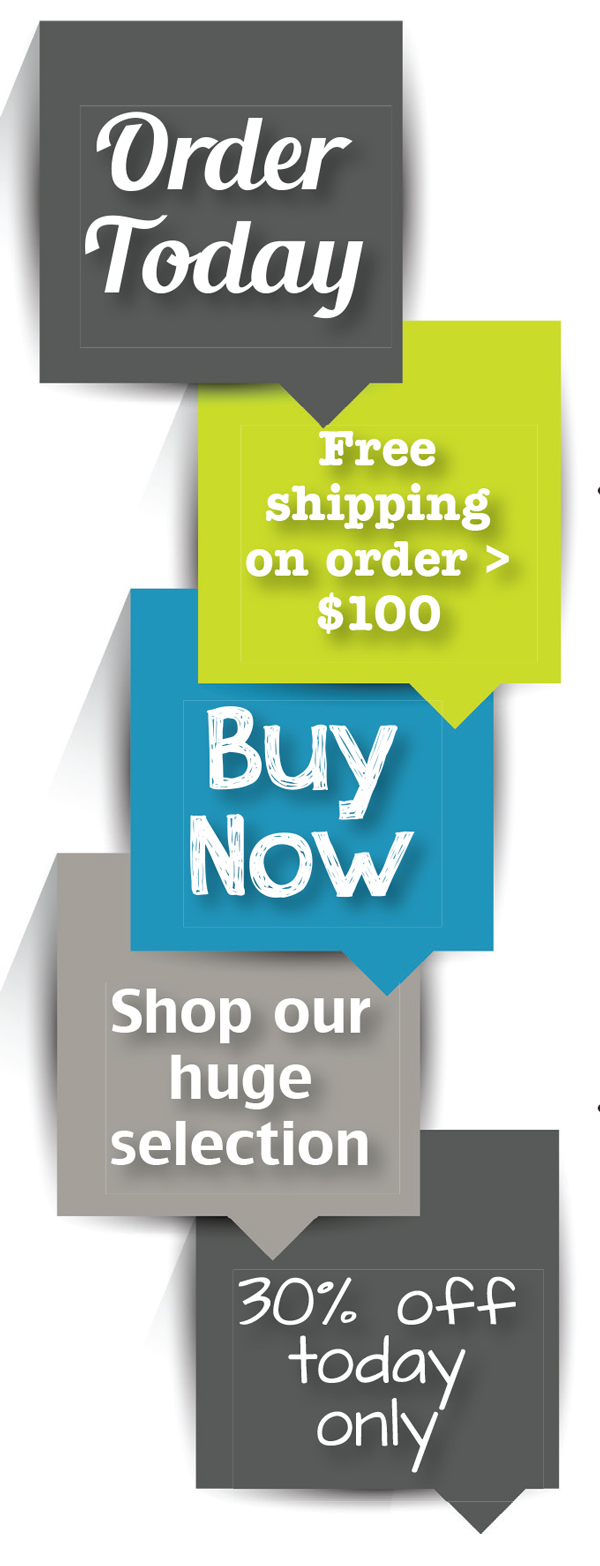The role your website plays is larger than just acting as an information portal—a great website shares your unique voice as a provider, builds the value of your products and services and invites site visitors to walk down one of several different paths to purchase. Ultimately, you want your website visitors to take action, whether that comes in the form of a quote request, an e-commerce sale, a phone call or a store visit.
Creating a website that elicits these action will build a strong pipeline of inbound leads; but remember, the Internet doesn't sell, good providers do. Try these leading demand generation tactics, and then implement lead management and follow-up programs to ensure that your sales team is ready to take action!
 E-commerce CTAs
E-commerce CTAsPart 1: Lead Generation
- Strong calls-to-action (CTAs): In marketing speak, we call the invitations to engage with your store on your website "calls-to-action." Lead generation CTAs should be utilized to capture customer information on lead generation forms. The key here is to give shoppers a reason to give you their contact info—even if they aren't quite ready to buy. Are you taking advantage of all of these opportunities to generate web leads?
- Promotions and deals: While many providers simply display their current promotions in a print-friendly format, this misses an opportunity to capture leads. Instead of just allowing customers to download your promotions, interrupt the process with a simple form that offers to email or text your customer the deal. Take it a step further by offering a "send to a friend" option, and knock it out of the park by giving shoppers the option to subscribe to your email list to stay up-to-date with promotions.
- Blog: Use your blog as an avenue to invite prospective customers to sign up to receive more valuable content. In your blog's sidebar, encourage site visitors to sign up for your newsletter to receive regular updates. Want to take it to the next level? Utilize subscription pop-up boxes that interrupt the reader once they start reading to invite them to subscribe. Hate pop-ups? I do, too—sometimes. However, on many occasions they've convinced me to sign up when I might not have otherwise done so.
- Giveaways: Offering shoppers a chance to win a prize is an excellent opportunity to capture leads on your website. Keep in mind that, while your products and services might not be the right fit for all of your site visitors, you can create a broader appeal by giving away an item such as a Fitbit. Offering additional entries for those who share the promotion with a friend opens up the opportunity for additional lead generation.
- Product landing pages: Ensure your product landing pages are optimized with multiple CTAs that engage shoppers at every stage of the shopping cycle. Effective product landing page CTAs include "Buy Now," "Request Info" and "Send to a Friend."
Drive Inbound Traffic to CTAs
Now that your website is a well-oiled engagement machine, you need to ensure your digital marketing strategy is working to drive traffic to your CTAs.
- Social media: While videos and funny pictures can be an element of your social media strategy, be sure you're utilizing your social channels to point your prospects to your site's CTA-rich content pages. Take advantage of sponsored posts to boost the reach of your social lead generation efforts.
- Pay-per-click (PPC): In my February article, I wrote that a strong CTA is critical to encourage prospects to click your ad to arrive at your intended landing page. The CTAs you will want to employ on your lead generation PPC advertising will differ from CTAs designed for e-commerce sales.
 Lead gen CTAs
Lead gen CTAsPart 2: Lead Management
Ready to capitalize on these inbound leads? Follow these best practices.
- Email auto-response: An immediate email auto-response is not optional. All of the leading website vendors allow you to setup an email that goes out to a prospect within minutes of their quote request. This email can easily achieve three objectives: confirm receipt of the request, set expectations as to response time and remind prospects who you are. (They are likely sending inquiries to multiple providers.) One caveat: an auto-responder email does not replace a personal follow-up. A quote request form is a promise to your website visitors that you will follow up with more info.
- Phone call: A follow-up phone call within 24 hours might work, but a phone call within 30 minutes will capture your prospect while they're hot.
When you get the prospect on the phone, your goal should be to:
- Build rapport. Thank them for their inquiry and introduce yourself and your business.
- Learn more about their wants and needs. Find out if their interests extend beyond the product or service about which they first inquired.
- Schedule an appointment. Establish a set time for them to visit your location for individualized attention.
In many cases you will be directed to voicemail. Leave a message within 30 minutes, another at 24 hours, a third a week later and a fourth four weeks out. On average, it takes a shopper 79 days to research a larger purchase such as a wheelchair, so don't be discouraged if you don't connect on the phone immediately.
- Email: Attempt to contact customers via phone first, but the reality is that some people just prefer email. If you get a prospect's voicemail, immediately draft a personal email.
- Text message: The ping of a text still rings personally. Be sure your online form asks for an optional cell phone number, and add a checkbox for the customer to consent to receiving texts.
Take advantage of all lines of communication your prospects provide you. Every person shops differently, and the key is to persistently follow up on each and every Internet lead.
Read all the articles in this series here.
